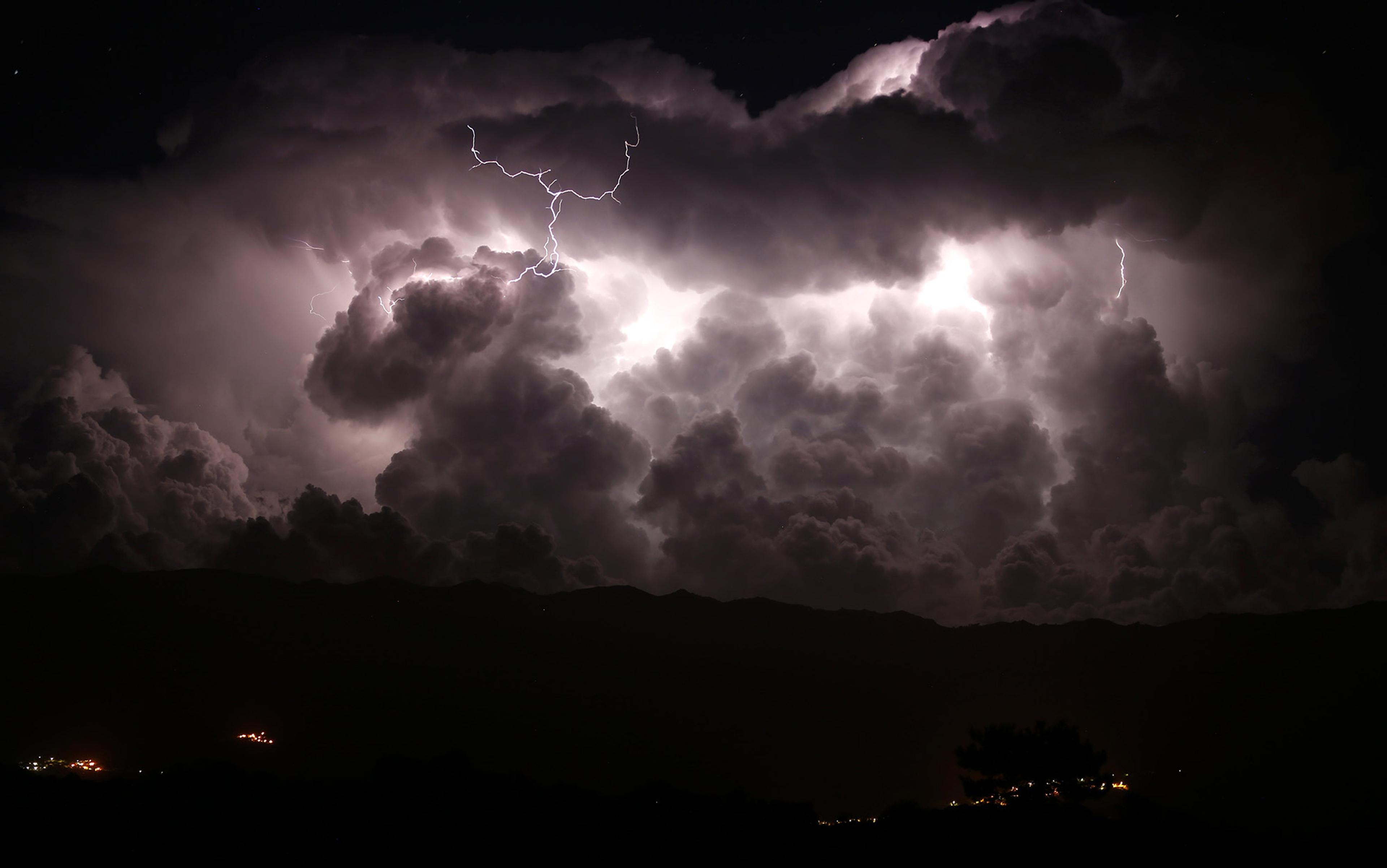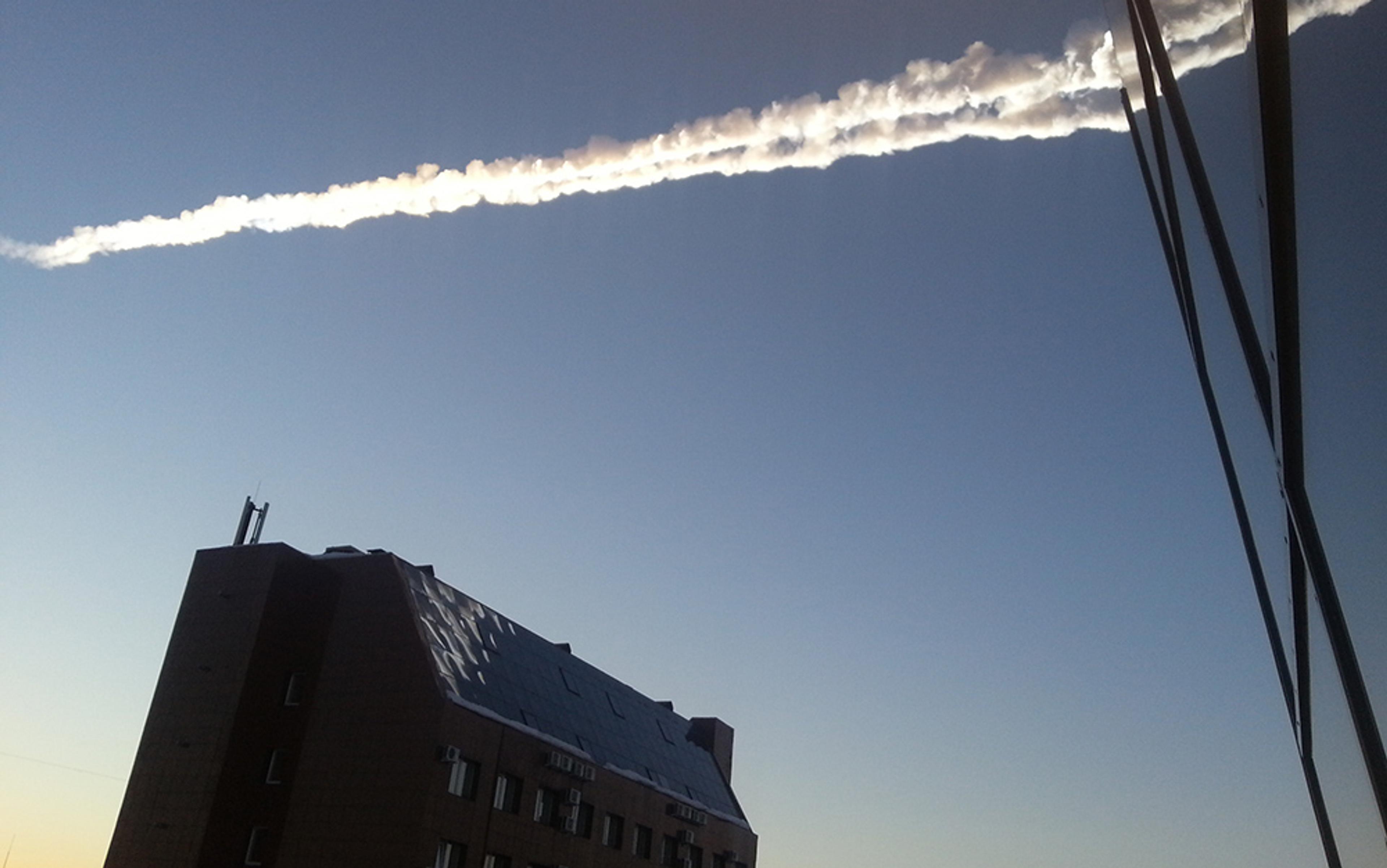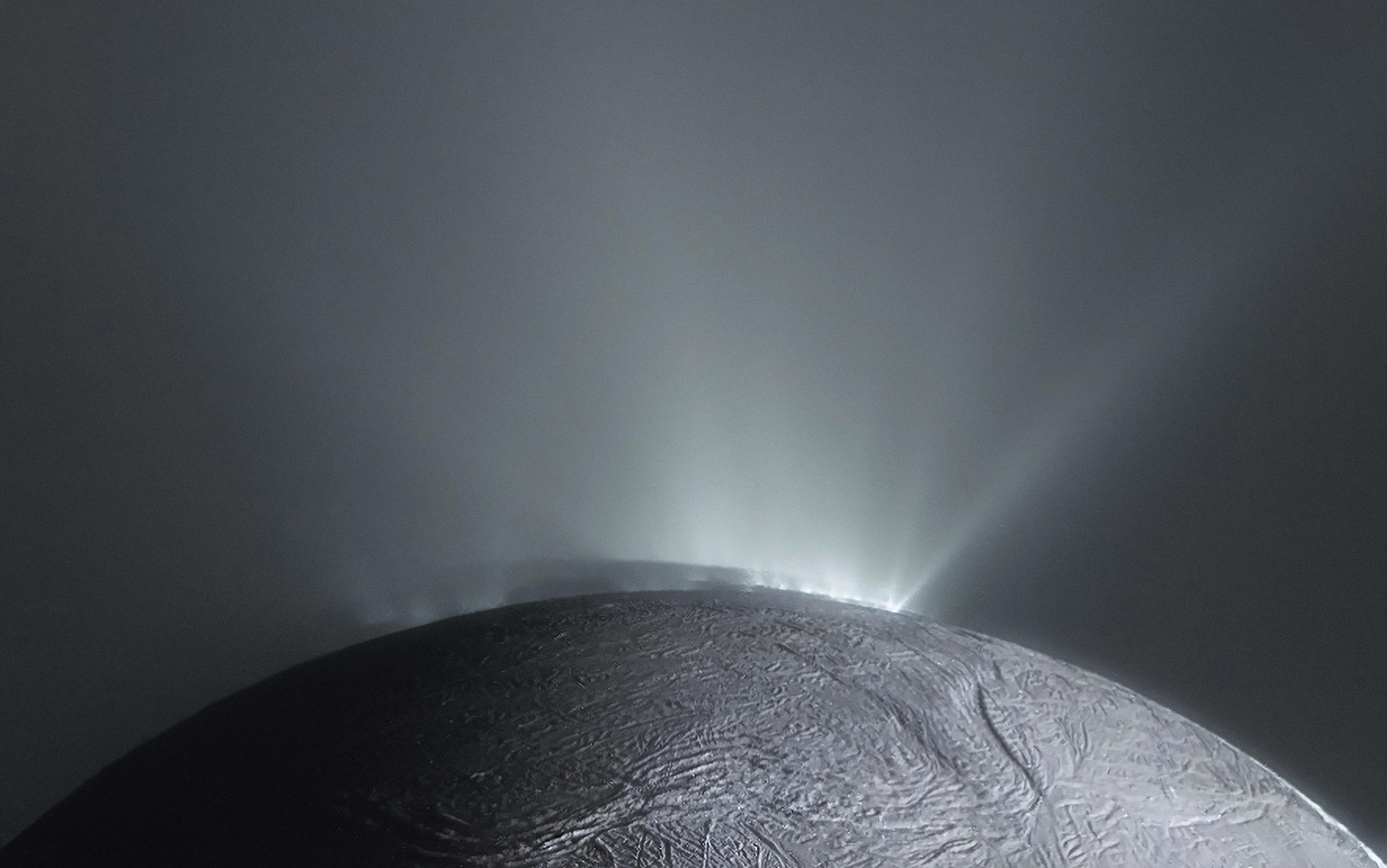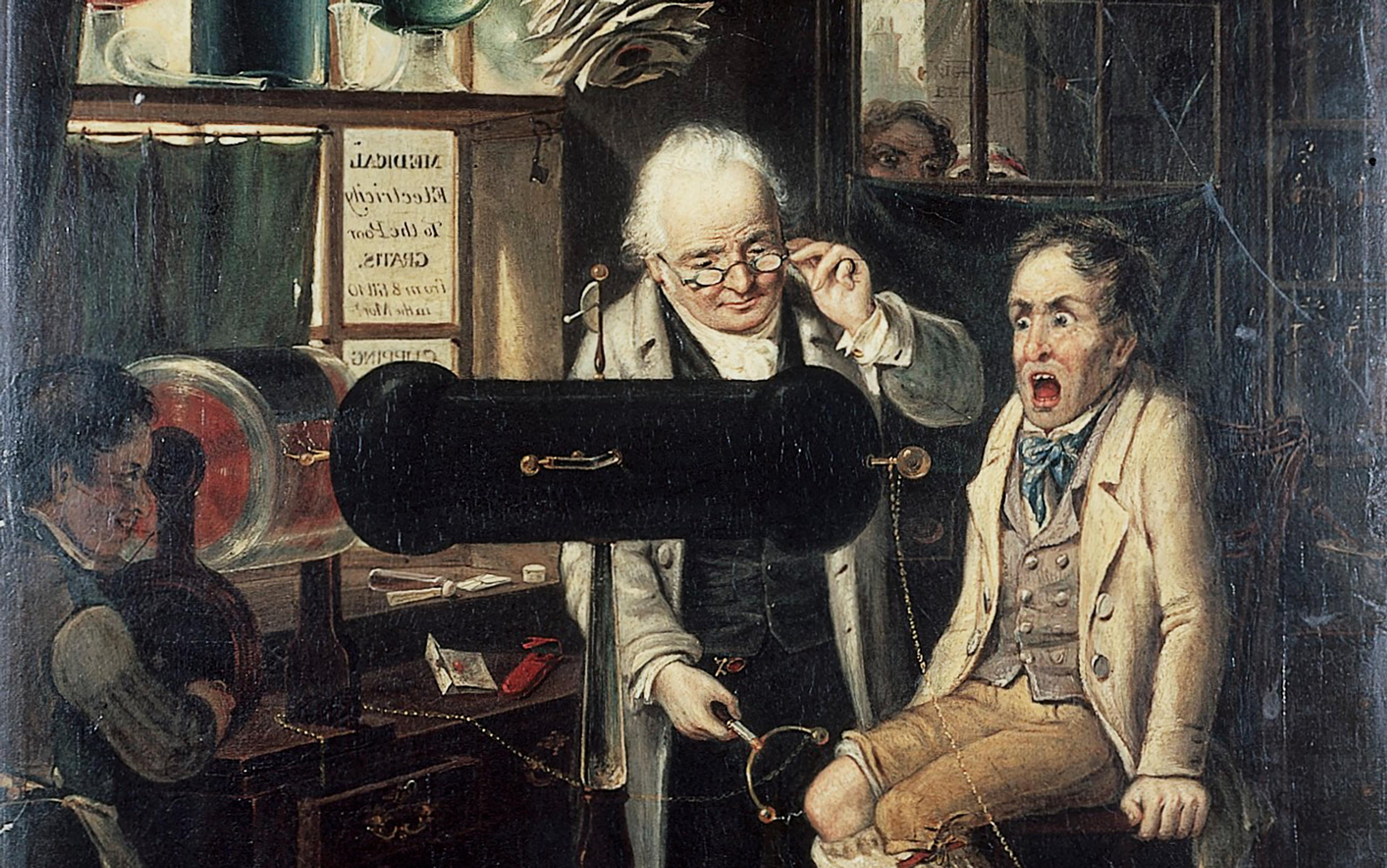Lightning flashes through the sky millions of times a day, and humans have witnessed the spectacle repeatedly for tens of thousands of years. It was probably the spark for organic life, an idea tested in the lab back in 1952 when the chemist Harold Urey and his graduate student Stanley Miller exposed a simulation of the early atmosphere to artificial lightning. To their delight, they ended up with a primordial soup of amino acids – the building blocks of life. According to the sociobiologist Edward O Wilson, lightning even played a role in the evolution of the human mind. Wilson argues that pre-humans gained access to high-protein, brain-boosting meals when lightning burned big game on the African savanna, leaving entire carcasses cooked and ready to eat. That same lightning provided the flames that our ancestors captured to keep the home fires burning. It was around the campfire (enabled by lightning) that human philosophy and culture was spawned.
Early humans who saw only lightning’s immense power, with no inkling of its electrical nature or its influences on life and evolution, believed that it came direct from the gods – most famously, the chief Greek god Zeus, who hurled down lethal thunderbolts from Mount Olympus. Norse mythology had Thor, son of Odin, whose rumbling chariot wheels and magic hammer generated thunder and lightning. Other cultures, from the Japanese to the Slavic, have honoured similar deities.
These early associations might explain why lightning symbolises the awe-inspiring power of nature and the creation of life. We are still gripped by the scene in the classic film Frankenstein (1931), where intense lightning flashes amid the roar of thunder animate the monster (Boris Karloff) made of dead body parts. Lightning also represents overwhelming force delivered at blinding speed. Military insignia often feature lightning bolts, and heavily armed military aircraft have been named Lightning and Thunderbolt since the Second World War. In that war, the Nazis called their fast-moving attacks that overran Europe blitzkrieg, for ‘lightning warfare’; they took the symbolism still further by stylising the initials of their SS units as two lightning bolts.
‘High voltage’ signs still display fearsome lightning bolts but lightning has also become the universal symbol of electricity as our benign servant. A digital device such as my smartphone uses only small, harmless voltages, but the phone displays a tiny lightning bolt while it is being charged. For decades, the electric power industry advertised itself with Reddy Kilowatt, a stick figure with limbs made of lightning and a lightbulb for a nose.
The widespread electrical phenomenon of lightning has existed for much of the Earth’s lifetime, but its origin story remains a mystery to this day. ‘When we consider how much we know about complex and exotic astrophysical objects half way across the Universe, it is quite amazing that we do not understand the basics of how something as common as lightning gets started in clouds just a few miles above our heads,’ wrote the physicists Joseph Dwyer and Martin Uman in a substantive review of the field in 2014. The irony is deepened by our urgent need to understand lightning, which has become more destructive around the globe, largely due to human activities and climate change.
The effort to see lightning through a scientific lens can be traced back to the 6th century BCE and the Greek philosopher Anaximander, who attributed lightning and thunder to natural causes: fire, gusts of air and collisions between clouds. Around 340 BCE, Aristotle similarly asserted that a ‘dry exhalation’ – a combustible emission that arose from the Earth – caused thunder and then burned to produce lightning; we see the lightning first, he wrote, because ‘sight is quicker than hearing’.
The mechanics were revealed only after 18th-century scientists began experimenting with electric sparks; the work helped them see that lightning was the same phenomenon – an electric spark between a cloud and the ground on an immense scale. The American polymath Benjamin Franklin was the first to suggest that this could be experimentally tested. He carried out the most famous such test in Philadelphia in 1752, when he launched a kite into a thunderstorm and held the end of the string where a metal key was attached. When he brought the knuckle of his hand near the key, he saw and felt an electric spark. That result began the modern era of lightning research.
Though work continued after Franklin’s breakthrough, two centuries passed before the next major insight into lightning. In 1960, the German-American physicist Heinz-Wolfram Kasemir proposed that lightning begins when leaders – electrically active channels in the air where current can flow – develop between regions of positive and negative electric charge in a cloud. Unlike the simple, seemingly well-established idea of a spark from a charged cloud to the ground, Kasemir’s idea meant that a complex series of steps precede what we see as lightning. His proposal was dismissed until measurements aboard research aircraft in the 1980s confirmed that there are, indeed, areas of positive and negative charge within and near thunderclouds.
Further knowledge came when researchers found ways to determine the voltage of a lightning bolt and the current that the voltage drives, the same properties that define any home electrical system. But at many millions of volts and thousands of amperes respectively, these quantities in lightning are orders of magnitude stronger than the 110 volts and 100 to 200 amperes that power the lamps, refrigerators and TV sets in our homes.
The electron flow heats the air to 30,000°C, rapidly expanding the air to create thunder
Physicists learned to dissect the development of a bolt with high-speed cameras. Researchers went on to trigger lightning artificially by sending rockets trailing copper wire into thunderstorms. Dwyer, Uman and other scientists at the International Center for Lightning Research and Testing in Florida (the US state with the highest incidence of thunderstorms) have examined some 400 triggered lightning bolts over the years.
Through such efforts, researchers learned that lightning is produced when ice crystals in a thundercloud are carried upward in a rising air current to encounter particles of graupel, a kind of soft hail, along with super-cooled water that remains liquid below zero degrees Celsius. The interaction produces positive and negative charges respectively at the top and bottom of the cloud, and a positive region below it. The opposite charges grow and mutually attract until the electric field between them starts to break down the intervening air and a stream of electrons, an electric current, flows. This is the leader that Kasemir proposed, and it can occur within a cloud, between clouds, or from a cloud toward the ground.
High-speed cameras show that the most prevalent kind of lightning strike starts when a series of leaders (generally too dim to be seen by the naked eye) carries electrons downward in a zig-zag path. Nearing the Earth, the electrons interact with positive charges below, making the air fully capable of carrying current. As a result, electrons from the cloud race to the ground along the same jagged conduit that the leaders traced. This is what we perceive as lightning. The electron flow heats the air in its path to 30,000°C, five times the Sun’s temperature, making a brilliant flash and rapidly expanding the air to create thunder. Other strokes can follow, but it is always the massive current of thousands of amperes that kills or injures living things and carries enough energy to burn or destroy what it hits.
Though we can trace the development of lightning in broad outline, there are some glaring lacks. Exactly how ice, water and graupel interact to separate positive from negative charges is unknown. Another mystery: from all we know about electrical discharges, an intense electric field of millions of volts across the air gaps between the positive and negative charges is necessary before leaders can develop. Measurements within clouds indicate that the internal fields never reach this level – yet lightning happens. This is why Dwyer and Uman consider the birth of lightning among the biggest mysteries in atmospheric science.
Solving these puzzles would have practical and human meaning, because lightning is becoming more destructive. Franklin’s invention of the lightning rod, which diverts the electric current of a bolt away from a structure, mitigated some dangers. But the potential of lightning to kill people and destroy structures, disrupt aviation and electrical systems, and ignite wildfires and forest fires has grown in the past decades. Much of this is due to human-induced global warming and atmospheric pollution. These encourage convection, the rising of warm air and moisture that feeds thunderstorms, and so produce more lightning. The atmospheric scientist Yoav Yair at the Interdisciplinary Center Herzliya in Israel points to another factor: the growing global concentration of people in urban areas – now at 55 per cent, projected to reach 68 per cent by 2050 – where tall buildings and air pollution make lightning strikes more likely.
These changes can affect large areas. For example, Yair notes that disruption of air travel by lightning, in-flight and at airports generally located near big cities is a growing issue in East, South and Southeast Asia. This Asia-Pacific region contains some major lightning-prone areas, while its air traffic is rising at nearly 5 per cent annually. In another example, Australian and US researchers analysed lightning-induced fires across dry and wet ecosystems in Australia, South Africa and South America. The number of such fires has grown in this century, a trend that the scientists connect to climate change as increasing the number of lightning strikes and making fires easier to ignite.
This is strong evidence that atmospheric pollution enhances lightning
One response to these dangers that also serves research is to track lightning. A lightning flash is a powerful source of electromagnetic radiation, much of it at frequencies below 500 KHz (the AM radio band begins nearby at 540 KHz, which is why lightning produces static at the low end of the AM dial). Sensors operating in this range can quickly triangulate the location of a distant lightning strike. The World Wide Lightning Location Network (WWLLN), for instance, uses more than 70 devices placed internationally to trace lightning.
In 2017, Joel Thornton of the University of Washington and colleagues used WWLLN data to show that lightning occurs twice as often above two busy shipping lanes in the Indian Ocean and South China Sea as above adjacent lightly travelled ocean areas. The difference, the researchers surmise, comes from the aerosol particles that ships emit as they burn fossil fuel. This is strong evidence that atmospheric pollution enhances lightning. Lightning location systems also monitor extreme weather, protecting flight operations at airports. In 2013, a locating system tracked a powerful typhoon hundreds of kilometres distant from the island of Mindanao in the Philippines, where meteorological data were lacking.
Lightning produces other characteristic emissions in infrared wavelengths when it interacts with atmospheric oxygen and nitrogen. Invisible to the human eye, this radiation can be sensed from specially equipped NASA space satellites that scan large parts of our planet. In 2016, Rachel Albrecht of the University of São Paulo in Brazil and her colleagues conducted an extensive analysis of this satellite data. They identified areas in Africa and Asia as highly active lightning sites, and Lake Maracaibo in Venezuela as the most active area on Earth. Its climate and terrain generate thunderstorms 297 days per year, on average. These produce an annual average of 233 lightning flashes per square kilometre, compared with a global average of six flashes per square kilometre. The eventual goal is to combine such data with models of lightning activity for long-range predictions of where lightning will strike.
A bolt can carry a staggering 13 million horsepower over its brief lifetime
To protect against lightning, we also need to know the energy or power in a typical bolt. The lightning flash and associated thunder, the brightest light and loudest sound commonly experienced on Earth, indicate a high energy level. Another clue is that lightning creates X-rays and gamma rays. These are thought to arise because, like the Large Hadron Collider at CERN near Geneva, the electric fields accompanying lightning accelerate elementary particles – in this case, electrons – to high energies. These particles generate X-rays, and gamma rays that initiate nuclear reactions.
But it is difficult to measure the power in a lightning bolt exactly. Estimates based on how much the bolt heats the air it traverses, and on its electrical properties, give a range of 1 to 10 gigawatts (1 gigawatt = 1 billion watts) over the second or so that a typical bolt lasts; the film Back to the Future (1985) got this right when it showed a 1.21 gigawatt lightning bolt turning a DeLorean sports car into a time-travel machine. In more familiar units, a bolt at the high end of the range carries a staggering 13 million horsepower over its brief lifetime.
It is also hard to measure how much energy is transferred to what the lightning hits, but answers are coming from a new approach that studies ‘lightning fossils’ or fulgurites (from the Latin for lightning). These result when lightning heats sand, soil or rock enough to melt the material and turn it into glass. In 2016, the geoscientists Matthew Pasek and Marc Hurst analysed 266 hollow cylindrical fulgurites retrieved from a sand mine in Florida, with lengths from centimetres to more than a metre (other fulgurites up to 5 metres long have been found). Using the known heat needed to vitrify silicon dioxide, the main component of sand, the researchers found that a bolt delivered only a small fraction of its power to change sand into glass.
However, the power transferred depends on the target material. In 2017, Jiangzhi Chen and colleagues at the University of Pennsylvania studied fulgurites in granite, where a lightning strike creates a high-pressure shock wave. Here, researchers found, the thunderbolt at a temperature of 100,000°C heats the rock to over 2,000°C within tens of microseconds, melting it to form a layer of glass. This is comparable with the devastating effects of a meteorite impact. Further studies will gauge these effects in other materials and give a basis to design appropriate protections.
Noting the high power that lightning can deliver, scientists have wondered if it could be helpful as well as destructive by providing free renewable energy. At Lake Maracaibo, a single gigawatt harvested from each of the 233 flashes per square kilometre per year could operate 20 residences. This would require building a network of collecting stations to capture the flashes, storing the power surges as they arrive at irregular intervals, and doling out the power to users as needed – a complex engineering project that could not compete economically with other energy sources. But once we learn lightning’s ancient secret – what triggers it – maybe we can learn how to keep it from even beginning before it does harm, and how to concentrate it in places where its power can be collected and used.
Whatever questions remain about ordinary lightning, even less is known about the rare and exotic form called ball lightning, a glowing sphere that appears near a lightning strike or thunderstorm and floats through the air for several seconds. One early eyewitness account from 1638 describes a ball of fire more than 2 metres in diameter that entered a church in Devon, England, killing four people and damaging the building. Thousands of other sightings have been reported, and in modern times ball lightning has been seen to penetrate glass and to appear inside closed metal aircraft. Many hypotheses have been proposed to explain this remarkable phenomenon but, with little quantitative data, no definitive explanation has yet emerged.
In 2012, however, Chinese scientists observing ordinary lightning had the good luck to see a glowing ball develop from a nearby ground strike. They recorded photos and videos, and the first ever spectrum of the radiance from ball lightning. This indicated the presence of silicon, a main component of soil. The result supports a theory put forth in 2000 that ball lightning arises when a lightning strike converts silicon in the ground into silicon compounds in nanoparticle form. Projected into the air, these oxidise at a relatively slow rate to generate a characteristic long-lasting glow. The hypothesis has yet to be confirmed.
Electrical discharges come from friction in the tiny particles carried by dust storms on Mars
Despite the enduring mystery, what we do know has helped us study other celestial bodies with an atmosphere, such as Jupiter. This planet displays extensive lightning activity, as first seen by the Voyager 1 spacecraft in 1979, and observed today by the Juno spacecraft that began orbiting Jupiter in 2016. Juno has detected radio waves from hundreds of lightning flashes believed to have arisen from charge separation between water and ice, just as on Earth. But Earthly lightning is densest near the equator, whereas Jovian lightning is concentrated near that planet’s poles. This is an important clue toward understanding the distribution of water on Jupiter and the planet’s atmospheric dynamics.
Widespread lightning has also been seen on Saturn, which has its own active atmosphere. Surprisingly, Mars – with its thin carbon dioxide atmosphere – displays lightning as well; but in that arid environment, it is ‘dry lightning’ that does not depend on atmospheric water and ice. Instead, as also happens on Earth, these electrical discharges come from friction among the tiny particles carried by the strong dust storms frequently seen on Mars.
Martian lightning is intriguing because the planet is a potential site for past if not present alien life. Starting in 2008, NASA landers have found perchlorates, compounds containing the negative ion ClO4, in Martian soil. These have attracted attention because they can fuel certain microorganisms that might have lived on ancient Mars. The perchlorates were more abundant than Martian geology would indicate, suggesting that they were made by lightning. Now an international research team has just found that electric discharges in a simulated Martian environment create perchlorates in large amounts, with implications for the evolution of alien life.
This experiment, carried out for a planet named for an ancient god, reminds us both of a time when the gods seemed to rule and of the 1952 Miller-Urey experiment that first sought a scientific explanation for life’s beginnings. Lightning embodies humanity’s evolution from belief in a universe controlled by the gods to belief in a natural world that we can grasp, with mysteries yet to be solved.






